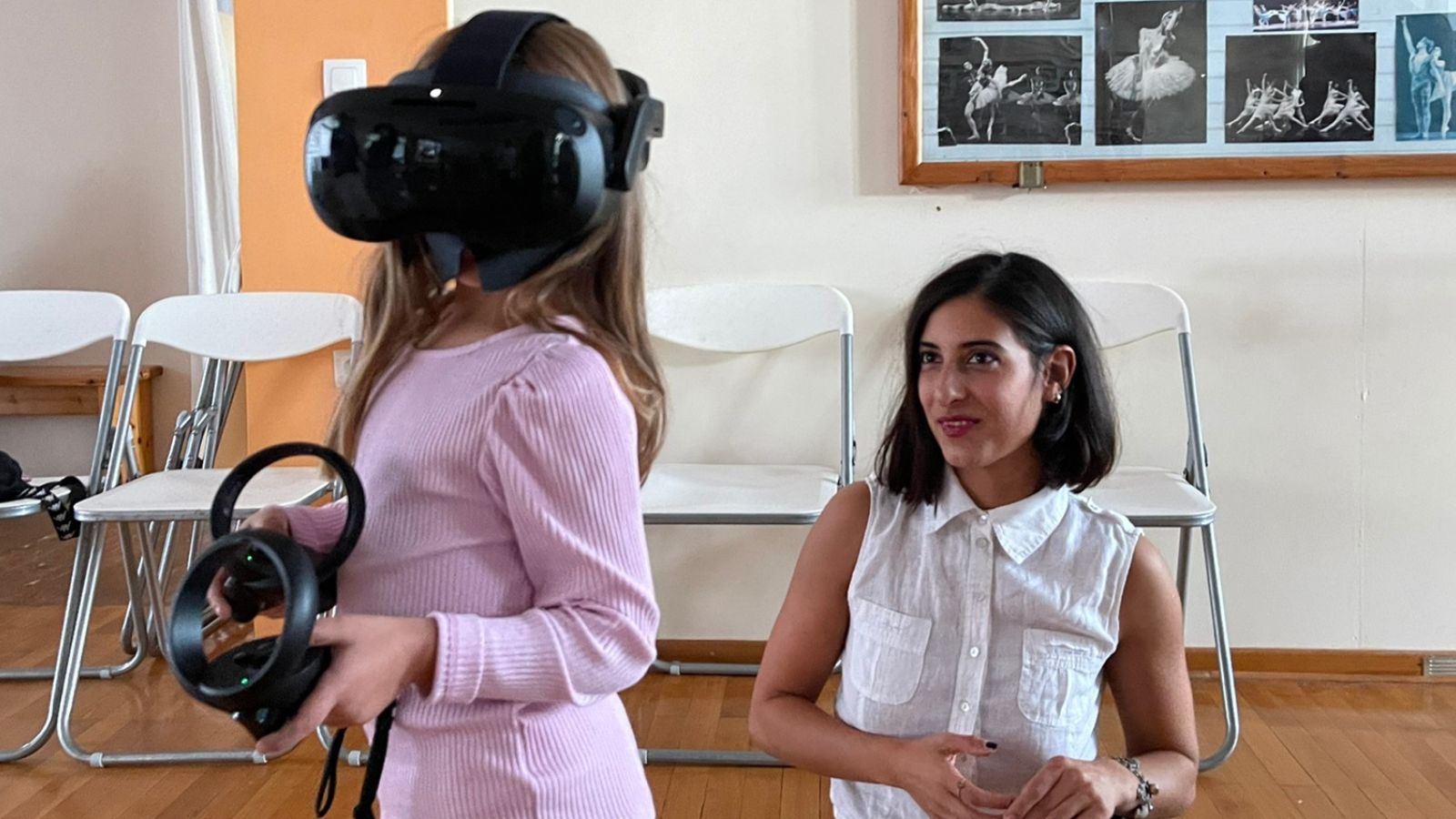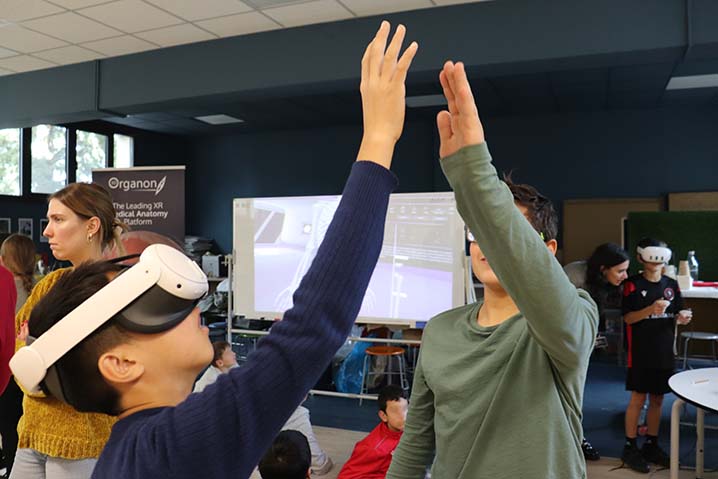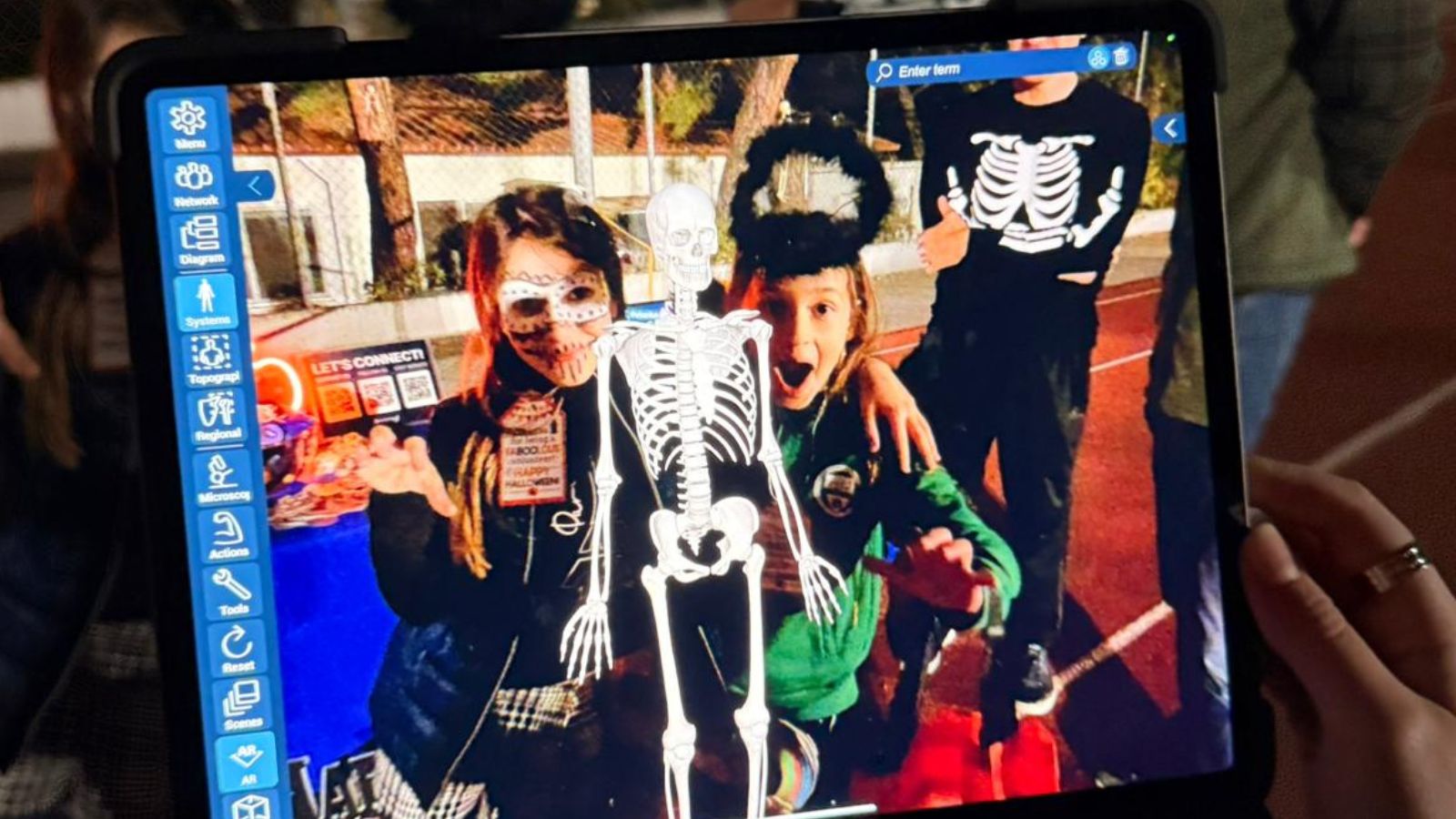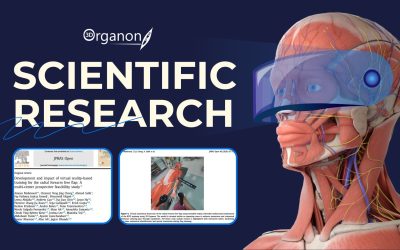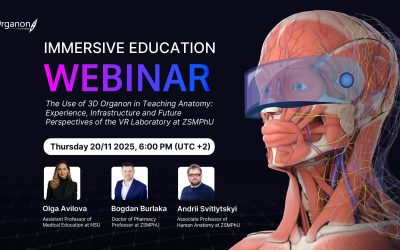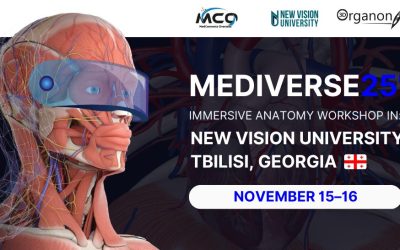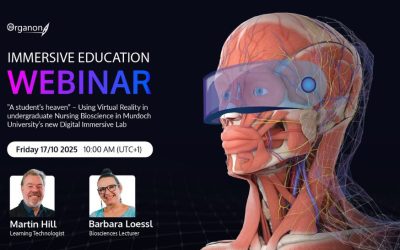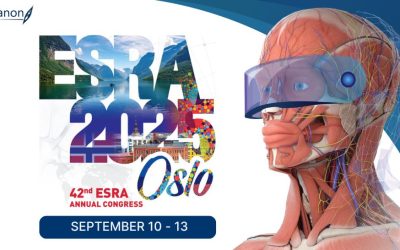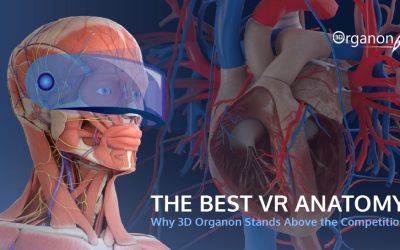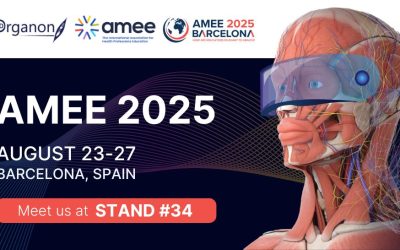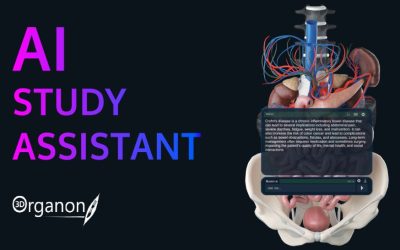The Future of STEM Education: XR Technologies Revolutionizing Learning
Benefits of XR in STEM Education
As technology advances, so does the way we teach and learn. Extended Reality (XR) technologies—including Virtual Reality (VR), Augmented Reality (AR), and Mixed Reality (MR)—are emerging as game changers in STEM education. These immersive technologies are transforming traditional learning environments, making abstract concepts tangible, fostering engagement, and providing students with hands-on experiences that were once unimaginable.
1) Immersive Experiences and Real-World Simulations
One of the most compelling advantages of XR in education is its ability to provide immersive experiences that go beyond textbooks and lectures. Through VR simulations, students can perform complex scientific experiments, conduct virtual dissections, or step into historical events. For instance, a VR platform can transport students inside the human body to observe the circulatory system in action or allow them to conduct chemistry experiments without safety risks.
Additionally, engineering students can use VR to design, test and refine prototypes in a virtual lab, while physics students can simulate gravitational forces in different planetary environments. These real-world applications enable students to develop problem-solving skills and gain practical knowledge without requiring expensive equipment or field trips.
2) Visualization of Complex Concepts and Data
STEM subjects often involve abstract concepts that can be difficult to grasp through traditional teaching methods. XR enhances comprehension by allowing students to visualize and interact with these concepts in an engaging way.
- Biology: VR enables students to explore the human body in 3D, gaining a deeper understanding of anatomy and physiological functions. Platforms like 3D Organon Anatomy take students on virtual journeys through the brain, nervous system, and other organs.
- Chemistry: AR can overlay 3D molecular structures onto students’ workspaces, helping them understand chemical bonds and reactions in real-time.
- Physics: VR simulations demonstrate principles such as electromagnetism and thermodynamics, allowing students to manipulate variables and observe their effects.
- Data Science: Platforms like Tuva leverage XR to present large datasets interactively, enabling students to analyze climate change patterns, genetic sequences, and astronomical data.
By making complex information more accessible, XR improves retention and comprehension in STEM education.
Dancing Class in Elementary School with the use of VR
3) Interactive and Engaging Learning Environments
XR transforms classrooms into dynamic, interactive spaces where students actively participate in their learning. Unlike passive learning methods, XR encourages curiosity and engagement by allowing students to explore, experiment, and collaborate. This approach not only enhances motivation but also nurtures critical thinking and creativity.
For example, VR field trips can take students to Mars’ surface, ancient civilizations, or the deep ocean, providing experiences that traditional classroom settings cannot match. Immersive learning environments make STEM subjects more appealing and relatable, especially for younger students.
Additionally, virtual spaces like the Medverse allow educators to create safe environments for students to engage in hands-on anatomy learning experiences.
Immersive Anatomy Workshop at Pinewood, The American International School of Thessaloniki, Greece
4) Collaboration and Global Connectivity
A major advantage of XR in STEM education is its ability to foster collaboration. With XR-powered virtual classrooms and labs, students from different parts of the world can work together on projects, conduct experiments, and exchange ideas in real time.
For instance, students can:
- Collaborate on designing virtual models for engineering projects.
- Work on simulated scientific experiments in shared digital labs.
- Participate in global hackathons or problem-solving challenges within a virtual environment.
This global connectivity helps students develop teamwork, communication, and cultural awareness while exposing them to diverse perspectives in STEM fields.
5) Equal Access and Inclusivity in STEM Education
One of the most transformative aspects of XR is its potential to democratize education. Schools with limited resources can provide students with virtual access to top-tier labs, research facilities, and educational experiences that would otherwise be inaccessible. VR labs simulate real-world experiments, allowing students to gain hands-on experience without expensive or hazardous materials.
Additionally, XR supports diverse learning needs by offering adaptive features such as:
- Text-to-speech and closed captioning for students with hearing impairments.
- Haptic feedback and gesture controls for students with physical disabilities.
- Customizable learning environments that cater to different cognitive styles.
Halloween Pinewood Event with the use of 3D Organon AR skeleton
Real-World Example: XR in Anatomy Education
A compelling example of XR’s impact in STEM education comes from Pinewood, The American International School of Thessaloniki, which integrates the 3D Organon platform for anatomy education. This immersive technology allows students to explore the human body like never before—assembling muscles, bones, and organs in a hands-on, interactive manner.
A recent workshop conducted by the 3D Organon team demonstrated the effectiveness of this approach. Students quickly grasped complex anatomical structures and retained the information more effectively than through traditional methods. One parent shared that her child was so excited about the experience that she continued discussing and drawing anatomical diagrams at home in multiple languages. This integration of immersive learning showcases XR’s potential to revolutionize education.
The Future of XR in STEM Education
As XR technologies continue to evolve, their role in STEM education will only expand. With advancements in hardware and software, we can expect even more realistic simulations, AI-driven personalized learning experiences, and greater accessibility for students worldwide.
Enhancing STEAM Education with ISTE Standards and 3D Organon
The International Society for Technology in Education (ISTE) Standards are a framework designed to guide the integration of technology in education, ensuring that students develop the skills necessary to thrive in a digital world. These standards promote creativity, critical thinking, collaboration, and problem-solving. In line with these goals, 3D Organon is applied in STEM education to enhance student engagement and understanding through interactive, immersive learning experiences. By integrating 3D Organon’s AR-based anatomy models, students gain hands-on knowledge of complex scientific concepts, supporting the ISTE Standards’ emphasis on innovative learning and digital fluency
Research and Further Resources
Research continues to highlight the growing impact of immersive technologies on STEM education and the broader medical field.
- Comparing learning retention in medical students using mixed-reality to supplement dissection: a preliminary study
- The Holographic Brain: Interactive Holography for Engaging Young People with Anatomy Education
- Meta-Analysis of STEM Learning Using Virtual Reality: Benefits Across the Board
- Integrating immersive technologies with STEM education: a systematic review
Newsroom
Scientific Research — Development and Impact of VR-Based Training for the Radial Forearm Free Flap: A Multi-Center Prospective Feasibility Study
A groundbreaking study led by Ameen Mahmood titled Development and Impact of VR-Based Training for the Radial Forearm Free Flap: A Multi-Center...
Immersive Education Webinar – The Use of 3D Organon in Teaching Anatomy: Experience, Infrastructure and Future Perspectives of the VR Laboratory at ZSMPhU
A one-of-a-kind Immersive Education Webinar by 3D Organon, hosted by Dr. Olga Avilova, with panelists Dr. Bogdan Burlaka and Dr. Andrii Svitlytskyi,...
3D Organon Brings Immersive Medical Education to Tbilisi
3D Organon Brings Immersive Medical Education to Tbilisi 3D Organon, the world’s leading XR and AI-powered medical education platform, is visiting...
Immersive Education Webinar by 3D Organon“A Student’s Heaven” – Using Virtual Reality in Undergraduate Nursing Bioscience at Murdoch University’s New Digital Immersive Lab
Immerive Education Webinar Join the upcoming Immersive Education Webinar by 3D Organon, titled “A Student’s Heaven” – Using Virtual Reality in...
3D Organon Showcases XR Technologies at ESRA 2025 in Oslo
3D Organon Showcases XR Technologies at ESRA 2025 in Oslo 3D Organon will participate in the 42nd Annual Congress of the European Society of...
The Best VR Anatomy Software
The Best VR Anatomy Software Virtual Reality (VR) is revolutionizing medical education by giving students an immersive and interactive way to study...
Back to Uni: A New Academic Year Filled with Innovation
Back to Uni: A New Academic Year Filled with Innovation As the new academic year approaches, it offers a fresh opportunity to transform education...
3D Organon to Showcase Latest Advancements at AMEE 2025 in Barcelona
3D Organon to Showcase Latest Advancements at AMEE 2025 in Barcelona 3D Organon is proud to announce its participation in AMEE 2025, one of the most...
Revolutionizing Anatomy Learning with AI-Powered Assistance
3D Organon Unveils Groundbreaking AI Study Assistant, Redefining Anatomy Learning 3D Organon has launched a revolutionary AI-powered Study Assistant...
Subscribe to get the latest news!
We promise we don’t send spam
US Office
One World Trade Center, New York City, NY 10007, US
Europe Office
Vas. Sofias, Marousi, Athens, 15124, Greece
Asia | Oceania Office
Township Drive, Burleigh Heads, Gold Coast, QLD 4220, Australia
